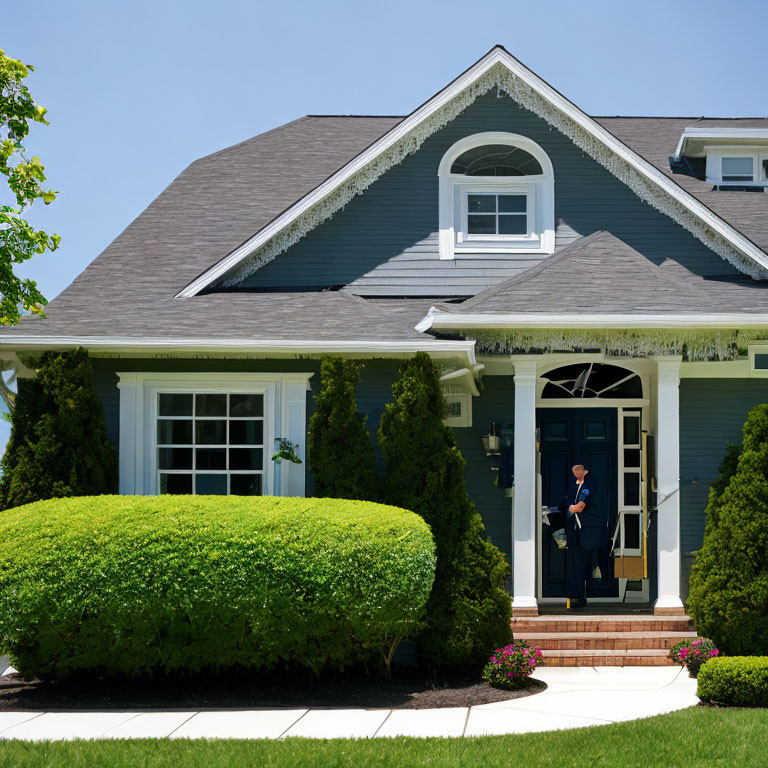How Do You Weatherproof a House?
Weatherproofing your house for summer or winter is a great way to save money. By making your home a little more protected from the elements, your cooling and heating systems don't have to work as hard.

There are a number of ways to weatherproof your house. Here are some of the main ones:
Insulation
Insulation is half the battle when weatherproofing your home. Obviously, if your house is already built, adding insulation to your walls is a bit tricky. It is possible though.
If your house is several years old, your insulation has likely lost a little bit of its effectiveness. You can add more to your wall insulation by drilling holes in the drywall and blowing more in. If it's a very old home, you may even consider removing the drywall and starting over. These techniques are not exactly the low hanging fruit of home insulation, however. There are a few easier places to start.
Adding insulation to your attic is much easier than the walls. Generally speaking, attics are easier to access. This is a quick way to improve a homes insulation, as the roof is essentially a home's blanket.
If you have a crawl space, you'll want to make sure its insulation is maintained and upgraded as necessary.
Insulating Windows
After going to all that effort to insulate your walls and roof, it's a shame to leave a leak around your windows. You can seal those up with caulking to prevent a draft.
Double-pane glass is another great technique for maintaining your home's temperature. It's not cheap, but many homeowners find it worth the investment to keep a more steady temperature inside. If you've already got double-pane glass, you can still go up another level. Window inserts can add a third layer of protection. These inserts typically use a clear plastic that can effectively act like another pane, but for much cheaper than glass. They aren't perfectly clear, because they aren't perfectly flat like glass. They're not bad though, and you may want to consider them if you're looking for another barrier from the weather.
Insulating Doors
Doors can be another weak link in our protection against the elements. Make sure your weatherstripping is replaced if there are cracks or flat spots. Look to see where light can pass through to get an idea of how your current weather stripping is performing.
Protecting Your Door
If your doors have glass, you may consider installing thicker glass or plastic sheeting over the existing windows. This gives you an extra layer of protection from the elements. If you live in an area with ice storms, this could really save you some trouble.
Repairing the Roof
You can check your roof for missing or damaged shingles. This will prevent water infiltration, potentially saving you big money down the road. Water damage in a roof can wreak havoc on the structural integrity, and that's not an expense anyone wants to be surprised with.
Sealing the Foundation
Applying sealant or caulk to cracks in the foundation or exterior walls to prevent water infiltration. This is another little investment that could save you from having to make a big investment down the line. If you live in a cold area, cracks in your foundation can be filled with ice, with then expands and furthers the damage. Sealing those up before winter would be a wise move.
Creating Shade
Planting trees, or large bushes can shade your windows and walls. This is an overlooked technique to keep your house cooler from the heat, since it requires a long-term investment of time.
Growing a tall plant doesn't happen overnight, but here are a few options that grow quickly:
- Black Cherry Tree - As long as you don't mind a little fruit. (These ones are really great antioxidants too.)
- Silver Maple Tree - This is a good option if you don't want to clean up fruit, but make sure your soil has plenty of iron. It's kind of needy like that.
- Arborvitae - This fluffy tree doesn't need pruning, and grows thickly enough that a line of them would effectively serve as a wall.
- Bamboo - You may think this only grows in tropical climates, but there are many different species, and several can withstand snow. Here are some:
- Fargesia Robusta
- Fargesia Nitida
- Fargesia Dracocephala
- Phyllostachys Nuda
- Phyllostachys Vivax
- Note: Fargesia species may be preferable because they don't get running roots. They tend to clump and be more manageable.
If you'd prefer a professional opinion, there are weatherproofing specialists that can give your home an audit. Their report will detail how much energy loss your house has, and what steps you'd need to take to fix it. However you choose to do it, weatherproofing is a good way to keep your home comfy and save a few bucks in the long run.
